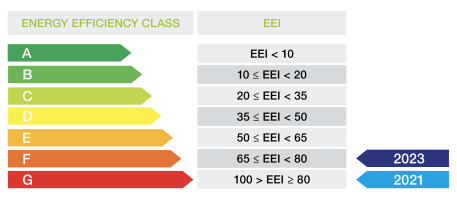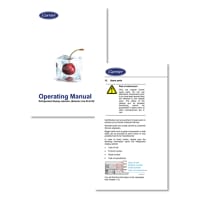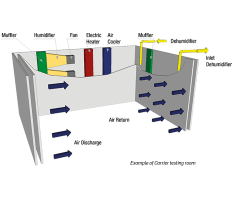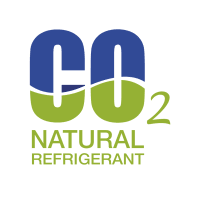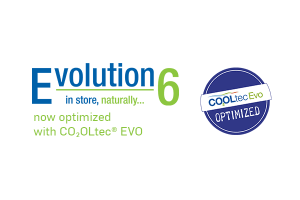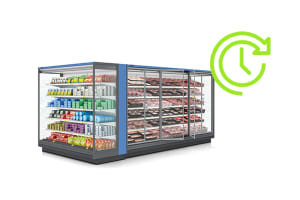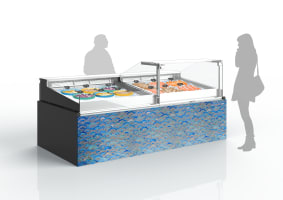
EcoDesign and Energy Labelling Regulations
Natural Leader in Sustainability and Energy-Efficiency
CCR is focused on keeping you compliant.
Adopted by the European Union Commission in October 2019, the implementation of the EcoDesign directive for “refrigerated display cabinets with a direct sales function” will be applicable from the 1st of March 2021. CCR tells you everything you need to know about the regulation. Follow the guide.
EcoDesign: An initiative led by the European Union
Adopted by the European Union Commission in October 2019, the implementation of the EcoDesign directive has an application date defined on the 1st of March 2021. The directive applies to newly produced refrigerated cabinets only – the systems, racks and condensing units are covered by other regulations. The compliance is declared by the manufacturer with the declaration of conformity and with providing technical data to a European database called EPREL and the CE-mark. A verification procedure will be applied by the member states.

A clear objective
The objective of the EcoDesign directive is to bring manufacturers to design energy efficient products so as to reduce their environmental impact throughout their life cycle. This EU directive (Directive 2009/125/EC) is a framework for defining requirements regarding the product life cycle for products placed into the market. It covers all energy-related products (ErP) sold in the domestic, commercial and industrial sectors. It has evolved over the years by adding new product categories, with the aim to encourage sustainable solutions, from design to service and recyclability.
The requirements
In the next tabs, you will discover the details of the guidelines set by the directive:
- Energy labeling
- Product design
- Product life cycle
- Customer information
Energy Labelling
The objective of Energy Labeling is two-fold: give clear, easy-to-understand label information on the product energy efficiency and classify products according to their level of efficiency (from G to A), with an overall effect of pulling the market towards more energy efficient products.All CCR products will be EcoDesign ready when the regulation enters into application in March 2021.
The Energy Labeling regulation will be enforced beginning in March 2021. Products marketed prior to this date are not affected. The next regulations upgrade will come into effect in 2023.
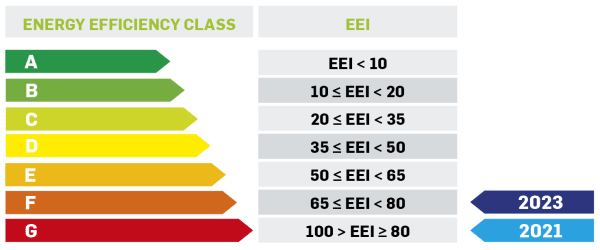
The Label
Each new refrigerating appliance will be supplied with a printed label gathering energy related information:
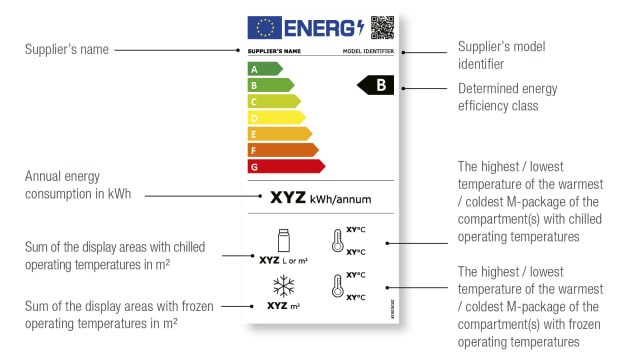
Energy Efficiency Index
This Energy Efficiency Index is a ratio between measured laboratory energy consumption1 and a standard energy consumption per cabinet category2.
1 Measured at ISO 23953 rating conditions
2 This standard energy consumption is based on data collection from various sources (manufacturer data, Top Ten list, catalogues...) and are not all based on ISO test standard.
Minimum performance thresholds are established and products that are not meeting these EEI thresholds can no longer be placed on the market.
The Energy Efficiency Index has been defined into two steps to plan further energy performance improvements:
From 01.03.2021: EEI ≤ 100%
From 01.09.2023: EEI ≤ 80%
The formula of the Energy Efficiency Index (EEI) is set as follows:

AE is the annual energy consumption, Edaily is the energy consumption measured over 24 hours
SAE is Standard Annual Energy consumption determined through a benchmark of existing equipment, defined by Category, Type, Temperature class, Total Display Area

Follow the life of products
In addition to requirements set at the product design level, the directive has set requirements to follow the life of products once in operation:- Availability of spare parts until 8 years after the last unit is put in operation with list available on website of the manufacturer
- Delivery time of spare parts in maximum 15 working days
- Access to repair and maintenance information on the manufacturer website starting maximum 2 years after the first unit being put in operation
- Requirements for dismantling for material recovery and recycling while avoiding pollution (equipment design according to WEEE – Waste Electrical and Electronic Equipment)
Guarantee free access to information
The regulation is listing a number of documents that should be readily available to all users of the products in operation.Instruction manuals and free access websites shall include the following information:
(a) the recommended setting of temperatures for optimum food preservation;(b) an estimation of the impact of temperature settings on food waste;
(…)
(e) instructions for the correct installation and end-user maintenance, including cleaning
(f) for integral cabinets: ‘If the condenser coil is not cleaned [the recommended frequency for cleaning the condenser coil, expressed in times per year], the efficiency of the appliance will decrease significantly.’;
(g) access to professional repair such as internet webpages, addresses, contact details;
(h) relevant information for ordering spare parts, such as internet webpages, addresses, contact details;
(i) the minimum period during which spare parts necessary for the repair are available;
(j) the minimum duration of the guarantee offered by the manufacturer;
(k) instructions on how to find the model information in the product database, as set out in Regulation (EU) 2019/XXX by means of a weblink that links the model information as stored in the product database or a link to the product database and information on how to find the model identifier on the product
TRUE OR FALSE
Check your knowledge!
Do these Regulations apply to condensing units and refrigeration systems (piping, condenser, etc….)?
Condensing units and refrigeration systems are part of other phases of the Ecodesign regulation and are not covered by the labeling.
Does the energy label need to be visible for the consumers in the shops?
Refrigerated cabinets need to be delivered with the energy label by the supplier.
The Regulation directive doesn’t mention the need for shops to have it visible or sticked on the product. What will happen to products with EEI > 100%?
If products have EEI > 100%, they cannot be put on the market in EU after 01.03.2021, products rated G (EEI >= 80%) can no longer be put on the market in EU after 01.09.2023.
Are cabinets already installed in the field within the scope of these Regulations?
No, these Regulations are applicable only for cabinets delivered after the entry into force, 01.03.2021. Cabinets put into the market before are excluded by these Regulations.
Can an energy label be improved by any means (doors, lids, lighting, fans…) in the field?
No, the energy label has to correspond to the status of the cabinets as delivered by the supplier out of the factory. Measures adopted in the field will not improve the cabinet´s classification and energy labeling.
Are there cabinets which are excluded from these regulations?
Yes, corner cabinets, saladettes, serve-over counters for fish with flaked ice, cabinets for live foodstuff (living fish and shellfish) are excluded by these regulations.
Will all refrigerated cabinets be available in A as we can see for home appliances?
At the time of collection of the benchmark data (2014), the Regulation was defined in a way that no products should be rated in A & B – for the top 10 list definition.
Will each country need to apply further actions to implement these regulations?
No, the regulations become immediately enforced as a law in all member states in the European Union simultaneously. Yes, member states will have to set up an organization for the market surveillance.
Contact Us



